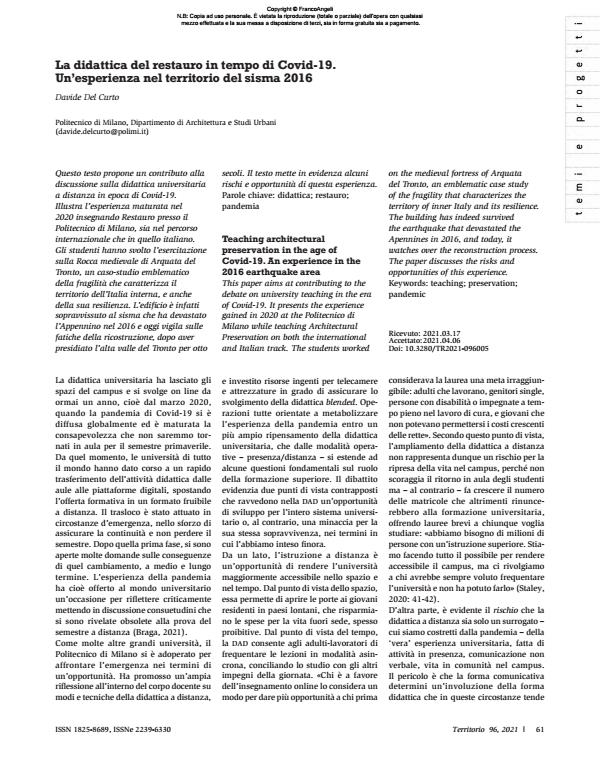Teaching architectural preservation in the age of Covid-19. An experience in the 2016 earthquake area
Journal title TERRITORIO
Author/s Davide del Curto
Publishing Year 2021 Issue 2021/96
Language Italian Pages 6 P. 61-66 File size 799 KB
DOI 10.3280/TR2021-096005
DOI is like a bar code for intellectual property: to have more infomation
click here
Below, you can see the article first page
If you want to buy this article in PDF format, you can do it, following the instructions to buy download credits

FrancoAngeli is member of Publishers International Linking Association, Inc (PILA), a not-for-profit association which run the CrossRef service enabling links to and from online scholarly content.
This paper aims at contributing to the debate on university teaching in the era of Covid-19. It presents the experience gained in 2020 at the Politecnico di Milano while teaching Architectural Preservation on both the international and Italian track. The students worked on the medieval fortress of Arquata del Tronto, an emblematic case study of the fragility that characterizes the territory of inner Italy and its resilience. The building has indeed survived the earthquake that devastated the Apennines in 2016, and today, it watches over the reconstruction process. The paper discusses the risks and opportunities of this experience.
Keywords: teaching; preservation; pandemic
Davide del Curto, La didattica del restauro in tempo di Covid-19. Un’esperienza nel territorio del sisma 2016 in "TERRITORIO" 96/2021, pp 61-66, DOI: 10.3280/TR2021-096005